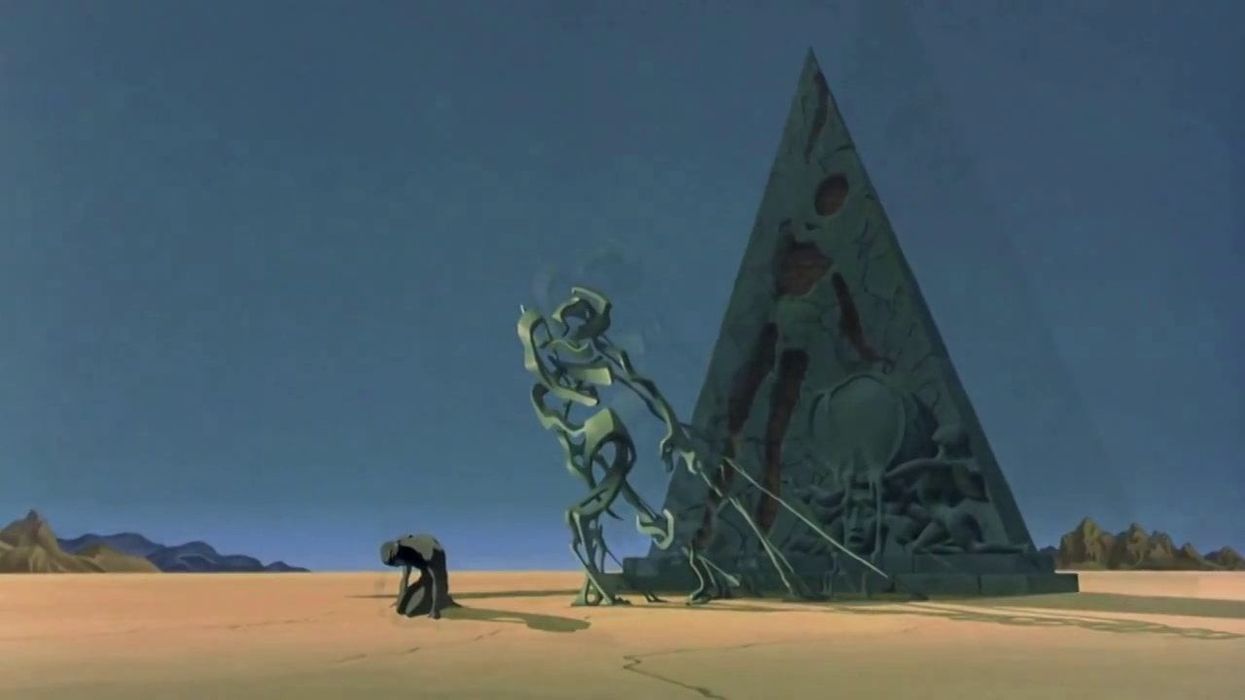Watch: The Animated Short that Salvador Dali and Walt Disney (Almost) Made
Salvador Dali worked for Walt Disney on an animated short film that took 58 years to complete, and the result is as cool and weird as that sounds.

While it might seem unlikely that surrealist artist and mustache champion of the world Salvador Dali would have collaborated with populist animator/mogul (and mustache enthusiast) Walt Disney, the Spanish artist actually worked briefly for Disney Studios. He contributed storyboards and concepts for a film called Destino (c), but it was shelved for economic reasons in 1947, and it would be decades before Disney's nephew Roy produced the final version.
With Luis Buñuel, Dali had already been an integral part of one of the most famous short films in history, 1928's Un Chien Andalou. Disney, on the other hand, had enjoyed tremendous success in the mainstream film community by concentrating on the storytelling potential inherent in animation, and his innovative narrative and camera techniques had led to massive success. Dali had recently worked for Alfred Hitchcock on Spellbound, though he had been frustrated by the results, specifically that much of his work had been cut.
Disney was a great admirer of Dali, reportedly saying that the artist "bubbles with ideas." Dali, for his part, thought of Disney, along with Cecil B. DeMille and the Marx Brothers, as "great American surrealists". A dinner party at Jack Warner's house led to Disney approaching Dali to work on a short project, entitled Destino, and shortly thereafter, Dali commenced work as an employee of the studio for about eight months, developing the story of "a dancer and a baseball player who is also the god Chronos," as well as creating the film's imagery and its themes of "the importance of time when we are waiting for destiny to enter into our lives."
The result was "twenty seconds of film, several paintings, various pen-and-ink drawings and many storyboards," though that was all that was completed before Disney halted production in 1947. Rediscovered by Roy Disney (Walt's nephew) decades later, Destino was "completed...on the basis of Dalí's first ideas and original sketches" under the supervision of director Dominique Monféry in 2003; though it features some CGI, the film is very reminiscent of Dali's work, and definitely worth seven minutes of your day.












